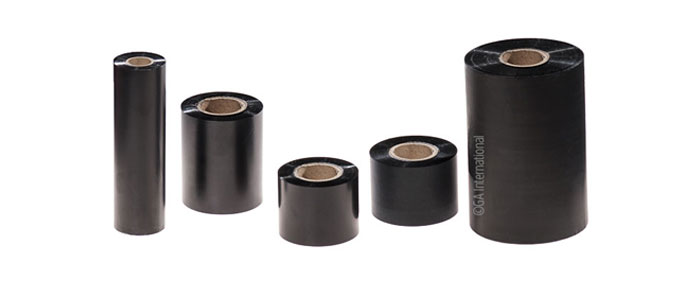
Thermal-transfer printing is an essential tool for all laboratories and healthcare facilities that require accurate and consistent sample and inventory identification. When deciding to integrate new labels into your workflow, it’s essential to understand that they need to be matched to the ink source of the printer, i.e the thermal-transfer printer ribbon.
Types of thermal-transfer printer ribbon
There are three types of ribbons typically used in thermal-transfer printers:
- Wax: Less expensive than other types of ribbons and the most common type of thermal-transfer ribbon available, wax ribbons have a low melting point and therefore provide less resistance against harsh environments. These ribbons are typically used for general-use paper stock labels and can be printed at relatively high speeds, making them ideal for use in warehouses and for printing shipping labels.
- Wax/Resin combo: Adding resin provides a coating that protects against extreme temperatures as well as chemical exposure, abrasion, fading, and smudging. This ribbon matches well with polypropylene labels as well as labels that are coated and weatherproof. It can also be matched with paper labels if needed. Wax/resin ribbons are perfect for use when barcoding or for outdoor environments.
- Resin: Full resin ribbons provide optimal resistance against most laboratory environments, including exposure to harsh chemicals like xylene and other organic solvents as well as cryogenic storage and autoclaving. Only high-quality, synthetic labels (polypropylene, vinyl, nylon) should be used with resin ribbons; paper labels should be avoided. Print speeds should be set lower than with other types of ribbons to obtain optimal print quality. Resin ribbons should be used when high durability is required, including exposure to extreme temperatures, harsh chemicals, as well as scratching and smudging.
Ribbon dimensions
Neither ribbons nor labels are sized the same. It’s crucial to ensure your ribbon matches the size of your label to ensure that the printout fits exactly as intended on the label. Choose a ribbon that is within the maximum width parameter of your printer (see your printer’s user manual) but still covers the entire width of your label to ensure that the printout encompasses the complete printable area of your label. It is fine to use a ribbon that is wider than your label width, though this can result in excessive ribbon waste. However, this may be advantageous when different label sizes are printed, as this will avoid unwanted swapping of ribbons.
It’s also important to verify that your ribbons match your printer! Ribbons are typically available in either 0.5” or 1” cores. It is recommended to consult your printer’s user manual to ensure an appropriate core is used. It’s worth verifying that the length of the ribbon is checked as well; some rolls may be too thick to fit into the printer, so be sure to check your manual’s size recommendations.
Ribbon compatibility
Note that certain printers are designed to work only with specific brands of ribbons. As such, ribbon compatibility with your thermal printer should also be verified. Furthermore, there are two different classes of thermal-transfer ribbons: Coated Side In (CSI) and Coated Side Out (CSO). This refers to which side of the ribbon roll is coated with ink. The location of the ink will determine how the ribbon is wound and fed through the printer. Most printers are designed to only work with one or the other. CSI ribbons need to be unrolled from the top and fed over the print head, while CSO ribbons should be unrolled from the bottom and fed underneath the printhead.
It’s always recommended to consult an experienced label manufacturer to ensure that the thermal-transfer printer ribbon you choose is correct. It is also advisable to test any new product to ensure that it fits with your printer and that it prints appropriately across all labels. Ensuring the ribbon matches the label will provide high-quality printouts, which is critical for laboratories and healthcare facilities that depend on barcodes for accurate and consistent sample identification.
LabTAG by GA International is a leading manufacturer of high-performance specialty labels and a supplier of identification solutions used in research and medical labs as well as healthcare institutions.